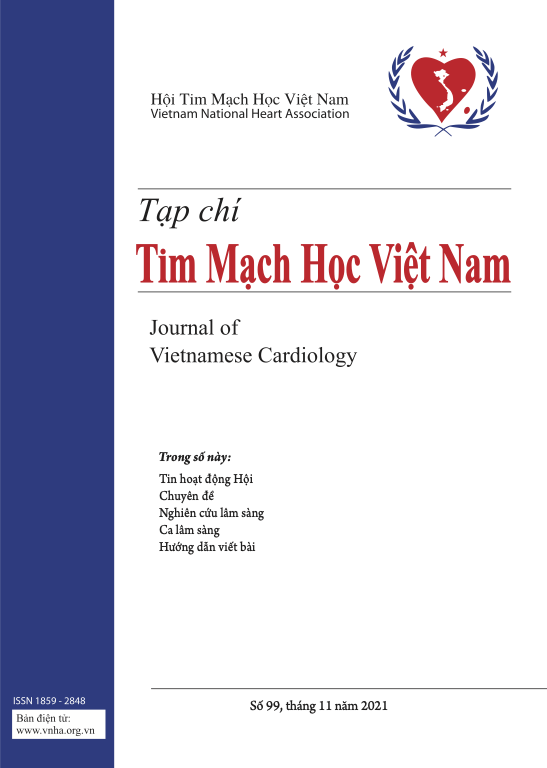Thông động - tĩnh mạch phổi Thách thức trong tiếp cận nguyên nhân đột quỵ thiếu máu cục bộ
DOI:
https://doi.org/10.58354/jvc.108.2024.822Từ khóa:
Osler – Weber – Rendu, PAVM, thông động – tĩnh mạch phổiTóm tắt
Bệnh nhân nữ 45 tuổi vào viện vì triệu chứng chóng mặt, buồn nôn và giảm thị lực đột ngột giờ thứ 3. Tiền sử chưa phát hiện bệnh lý trước đây. Chẩn đoán: nhồi máu não cấp thuỳ thái dương - đỉnh phải giờ thứ 3, có chỉ định tiêu sợi huyết. Sau tiêu sợi huyết bệnh nhân hồi phục không để lại di chứng.
Bệnh nhân được làm các thăm dò chẩn đoán nguyên nhân tai biến mạch não: holter điện tâm đồ 24h, siêu âm Doppler mạch cảnh, siêu âm tim. Các kết quả đều bình thường, chúng tôi chỉ định cho bệnh nhân làm siêu âm tim cản âm qua thực quản, trong quá trình siêu âm thấy 1 số bọt cản âm từ tĩnh mạch chủ trên về nhĩ trái sau 3-4 chu chuyển tim, nghi ngờ có luồng thông gián tiếp, sau đó bệnh nhân được chụp MSCT mạch phổi phát hiện có dị dạng thông động – tĩnh mạch phổi (Pulmolnary Arteriovenous Malformation: PAVM), và được chỉ định can thiệp nút thông động - tĩnh mạch. Khó khăn trên bệnh nhân này là không tìm thấy nguyên nhân gây tai biến mạch não cũng như dự phòng thứ phát tai biến cho bệnh nhân.
Tài liệu tham khảo
Kleindorfer DO, Towfighi A, Chaturvedi S, et al. 2021 Guideline for the Prevention of Stroke in Patients With Stroke and Transient Ischemic Attack: A Guideline From the American Heart Association/American Stroke Association. Stroke. 2021;52(7):e364-e467. doi:10.1161/STR.0000000000000375
![]()
Powers WJ, Rabinstein AA, Ackerson T, et al. Guidelines for the Early Management of Patients With Acute Ischemic Stroke: 2019 Update to the 2018 Guidelines for the Early Management of Acute Ischemic Stroke: A Guideline for Healthcare Professionals From the American Heart Association/American Stroke Association. Stroke. 2019;50(12):e344-e418. doi:10.1161/STR.0000000000000211
![]()
Angriman F, Ferreyro BL, Wainstein EJ, et al. Pulmonary arteriovenous malformations and embolic complications in patients with hereditary hemorrhagic telangiectasia. Arch Bronconeumol. 2014;50(7):301-304. doi:10.1016/j.arbres.2013.08.006
![]()
Cottin V, Chinet T, Lavolé A, et al. Pulmonary arteriovenous malformations in hereditary hemorrhagic telangiectasia: a series of 126 patients. Medicine (Baltimore). 2007;86(1):1-17. doi:10.1097/MD.0b013e31802f8da1
![]()
Das A, Greisman JD, Vazquez S, et al. Acute Ischemic Stroke in Patients With Pulmonary Arteriovenous Malformations: Paradoxical Embolism or Epiphenomenon? Stroke: Vascular and Interventional Neurology. 2023;3.1: e000571.
![]()
Shovlin CL, Jackson JE, Bamford KB, et al. Primary determinants of ischaemic stroke/brain abscess risks are independent of severity of pulmonary arteriovenous malformations in hereditary haemorrhagic telangiectasia. Thorax. 2008;63(3):259-266. doi:10.1136/thx.2007.087452
![]()








